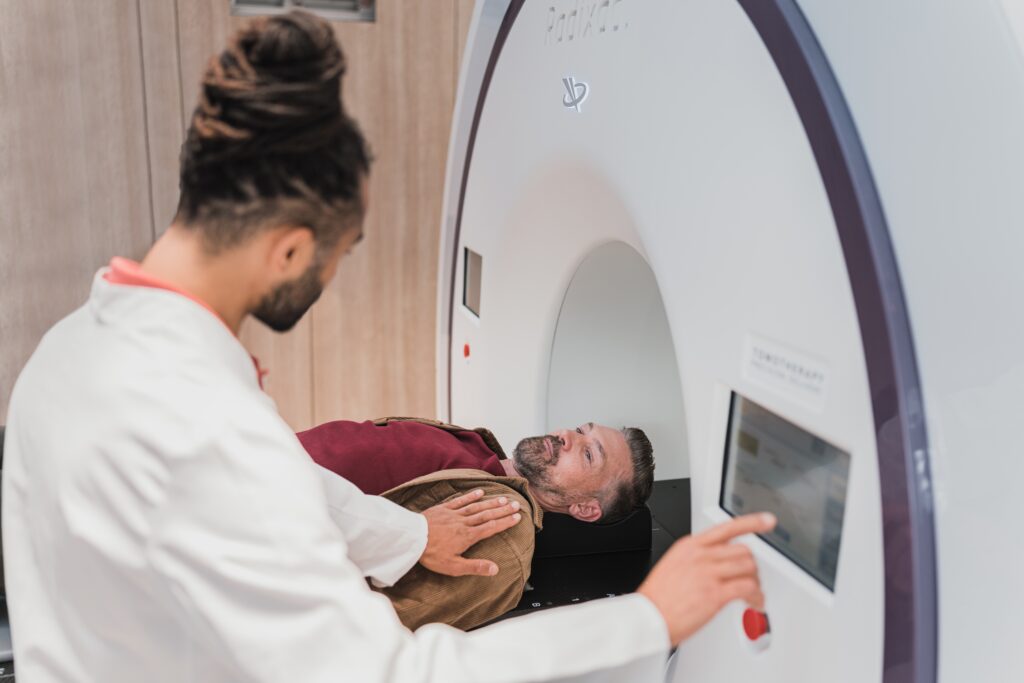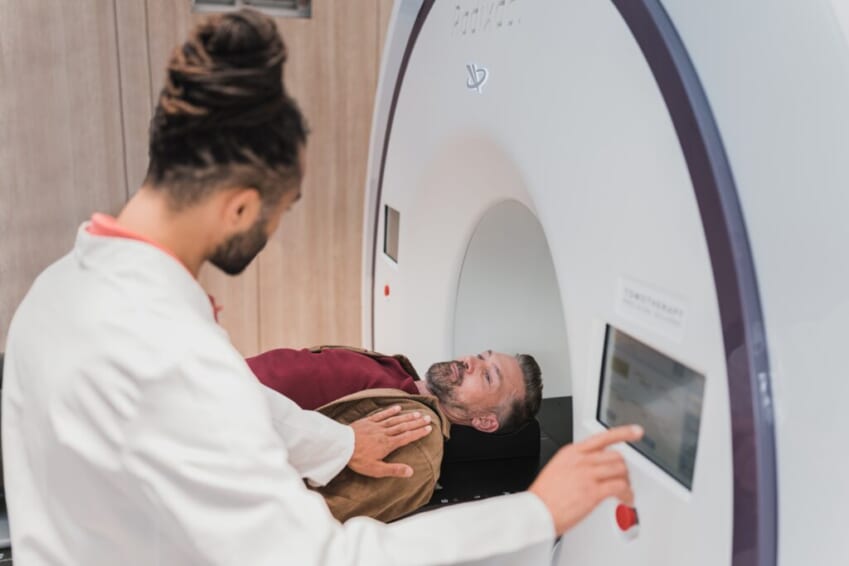Pulsatile tinnitus is a unique and relatively rare type of tinnitus characterized by a rhythmical noise heard in the head and/or ears, which typically pulses in sync with the individual’s heartbeat.
It is not typically caused by hearing loss, a common cause of non-pulsatile tinnitus. Instead, it has a complex differential diagnosis that can involve either vascular or non-vascular factors, like anemia, which we will explore in detail.
Some less common non-vascular causes of pulsatile tinnitus are metabolic diseases that lead to increased cardiac output, like pregnancy, anemia, and thyrotoxicosis. One rare vascular cause of pulsatile tinnitus is an aneurysm of the internal carotid artery or vertebral artery.
This article will explore the connection between pulsatile tinnitus and anemia, along with the various factors and conditions contributing to its occurrence.
Pulsatile Tinnitus Diagnosis and Treatment


Diagnosing and treating pulsatile tinnitus demands a comprehensive approach encompassing case history, physical examination, and radiographic imaging tests. This multifaceted strategy is essential to identify the condition’s underlying cause and implement appropriate treatments.
Case History
A thorough case history is crucial to identify any predisposing factors, such as head or neck injuries, recent infections, cardiovascular risk factors, or a history of exposure to loud noise.
"Treble Health helped me reduce my tinnitus by about 80%, and now I can live my life again!"



"Treble Health helped me reduce my tinnitus by about 80%, and now I can live my life again!"
– Steve D.
Book a free consultation to learn which Treble Health solution is right for you. Join Steve and thousands more who have found lasting tinnitus relief.
The case history will also involve asking the patient about the characteristics of their tinnitus, such as the duration, frequency, and severity of the symptoms. This information can provide valuable clues for the clinician to understand the potential causes and tailor the diagnostic process accordingly.
Physical Examination
A comprehensive physical examination, including otoscopic examination, audiologic evaluation, and auscultation of the head, neck, and chest, is necessary to rule out possible causes of pulsatile tinnitus.
An otoscopic examination and audiologic evaluation helps assess the health of the external auditory canal, tympanic membrane, and other structures of the auditory system, while auscultation can detect abnormal blood flow or vascular abnormalities contributing to pulsatile tinnitus. Additional tests, such as blood pressure measurement, heart rate assessment, and neurological examinations, may also be required in some cases.
Radiographic Imaging Tests



Depending on the findings from the case history and physical examination, radiographic imaging tests may be indicated to investigate the underlying cause of pulsatile tinnitus further. Imaging tests commonly used include computed tomography (CT), magnetic resonance angiography (MRA), along with magnetic resonance imaging (MRI).
These imaging techniques can help visualize the anatomical structures and blood vessels in the head and neck, potentially revealing any vascular abnormalities, tumors, or structural issues contributing to pulsatile tinnitus.
Treatment
The treatment of pulsatile tinnitus is tailored to address the specific underlying cause identified through the diagnostic process. In cases where a vascular abnormality is found, like an aneurysm or arteriovenous malformation, surgical intervention or endovascular procedures may be needed.
For non-vascular causes, such as anemia or thyrotoxicosis, appropriate medical management of the underlying condition can often lead to the resolution or improvement of the tinnitus symptoms. In some cases, when an identifiable cause is not found, symptom management through sound therapy, cognitive-behavioral therapy, or medications may be utilized to provide relief and improve the patient’s quality of life.
Pulsatile Tinnitus and Anemia Symptoms
Pulsatile tinnitus and anemia are two distinct conditions, each with unique symptoms. However, they can be interconnected, as pulsatile tinnitus has been reported as a symptom of anemia.
Pulsatile Tinnitus Symptoms
Pulsatile tinnitus is characterized by:
- Regularly hearing a steady beat or whooshing sound
- A beat that becomes faster when the heart rate increases and slower when the heart rate decreases
- Unilateral or bilateral presentation
- Loud and distracting sounds
Anemia Symptoms
Anemia is when the body lacks enough adequate red blood cells to supply enough oxygen to the rest of the body. It can be diagnosed by blood tests, including a complete blood count (CBC). Poor blood flow caused by anemia can lead to symptoms such as:
- Fatigue
- Weakness
- Headaches
- Dizziness
- Irregular heartbeats
- Shortness of breath
- Cold hands and feet
- Chest pain
Different types of anemia include iron deficiency anemia, aplastic anemia, sickle cell anemia, vitamin deficiency anemia, and pernicious anemia. Pulsatile tinnitus has been reported as a symptom of anemia in some cases.
Sickle Cell Anemia
Sickle cell anemia is a specific type of anemia in which red blood cells are abnormally shaped like sickles or crescent moons. These rigid, misshapen cells can get trapped in small blood vessels, blocking blood flow to different body parts.
Deafness and tinnitus are known complications of sickle cell disease, with hearing loss typically being sensorineural. There have also been known cases of sudden sensorineural hearing loss associated with sickle cell anemia.
Iron Deficiency Anemia



The most common type of anemia is iron deficiency-related anemia, caused by insufficient iron levels, as confirmed by blood tests. Iron supplements can usually correct this deficiency, but patients may require additional tests or treatments if iron supplements are not enough.
Iron deficiency can cause pulsatile tinnitus as arteries pump harder to deliver more blood flow. Without enough iron, the body cannot produce enough hemoglobin, causing blood vessels to swell and blood pressure to drop. The heart must work harder to compensate, leading to high blood pressure. Iron supplements used to reverse iron deficiency can help reduce the loudness of pulsatile tinnitus.
Connections Between Pulsatile Tinnitus and Anemia
Pulsatile tinnitus and anemia can be interconnected, with several studies highlighting the relationship between these two conditions. In this section, we will discuss the findings from these studies and the implications for diagnosing and treating patients with pulsatile tinnitus and anemia.
Study #1: Tinnitus In Anemia Patients and Analysis of Population-Based Survey
A study published in 2018 analyzed the characteristics of tinnitus (pulsatile tinnitus and non-pulsatile tinnitus) identified in anemia patients. The researchers found that in cases of pulsatile tinnitus, age and the difference between initial and post-treatment hemoglobin levels were significantly associated with a subjective improvement in tinnitus.
The study concluded that the therapeutic strategy and prognosis of tinnitus in anemia patients differ according to the characteristics of tinnitus (pulsatile tinnitus or non-pulsatile tinnitus) and the severity of anemia.
Tinnitus as a Presenting Symptom in Pernicious Anemia
Another study reported a case of pernicious anemia presenting with pulsatile tinnitus. The researchers associated tachycardia and increased arterial pulse pressure with anemia. The increased blood flow led to “capillary” pulsations that were perceived in the ear as pulsatile tinnitus. The successful treatment of the patient’s pernicious anemia corrected the hyperdynamic circulatory state, and resulted in the disappearance of the pulsatile tinnitus.
Study #2: Characteristics of Tinnitus Found in Anemia Patients
A different study found that patients with a normal hearing level (no hearing loss) and lower hemoglobin levels may have a higher chance of having pulsatile tinnitus. An improvement in tinnitus was more prominent in pulsatile tinnitus, especially in younger patients with no hearing loss. The study suggested that people can manage cases of pulsatile tinnitus due to anemia by treating the underlying anemia.
In conclusion, there is a notable connection between pulsatile tinnitus and anemia. Several studies have shown that the severity of anemia and the characteristics of tinnitus play a significant role in determining the therapeutic strategy and prognosis of tinnitus in anemia patients. Furthermore, treating the underlying anemia can improve pulsatile tinnitus symptoms, particularly in younger patients with no hearing loss.
Next Step: Book Free Consultation
- 75% of patients reduced their tinnitus within three months after following our recommendations.
- "I feel like Treble Health literally gave me my life back." - Randy S. (verified customer)
- Join thousands of people who have reduced their tinnitus after scheduling a free consultation.


















